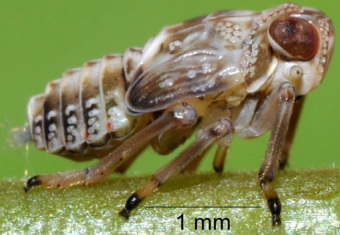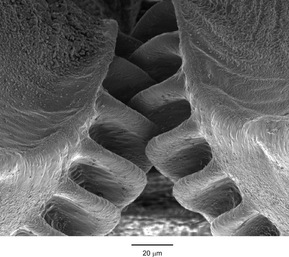The juvenile Issus - a plant-hopping insect found in gardens across Europe -- has hind-leg joints with curved cog-like strips of opposing 'teeth' on the upper portion of the rear legs that intermesh, rotating like mechanical gears to synchronise the animal's legs when it launches into a jump. These gears are lost as the animal ages and are thus rather like training gears.
The finding demonstrates that gear mechanisms previously thought to be solely human-made have an evolutionary precedent. Scientists say this is the "first observation of mechanical gearing in a biological structure."
The gears in the Issus hind-leg bear remarkable engineering resemblance to those found on every bicycle and inside every car gear-box. Each gear tooth has a rounded corner at the point it connects to the gear strip; a feature identical to human-made gears such as bike gears -- essentially a shock-absorbing mechanism to stop teeth from shearing off.
The gear teeth on the opposing hind-legs lock together like those in a car gear-box, ensuring almost complete synchronicity in leg movement -- the legs always move within 30 'microseconds' of each other, with one microsecond equal to a millionth of a second.
Through a combination of anatomical analysis and high-speed video capture of normal Issus movements, scientists from the University of Cambridge have been able to reveal these functioning natural gears for the first time. The findings are reported in the latest issue of the journal Science.


 RSS Feed
RSS Feed